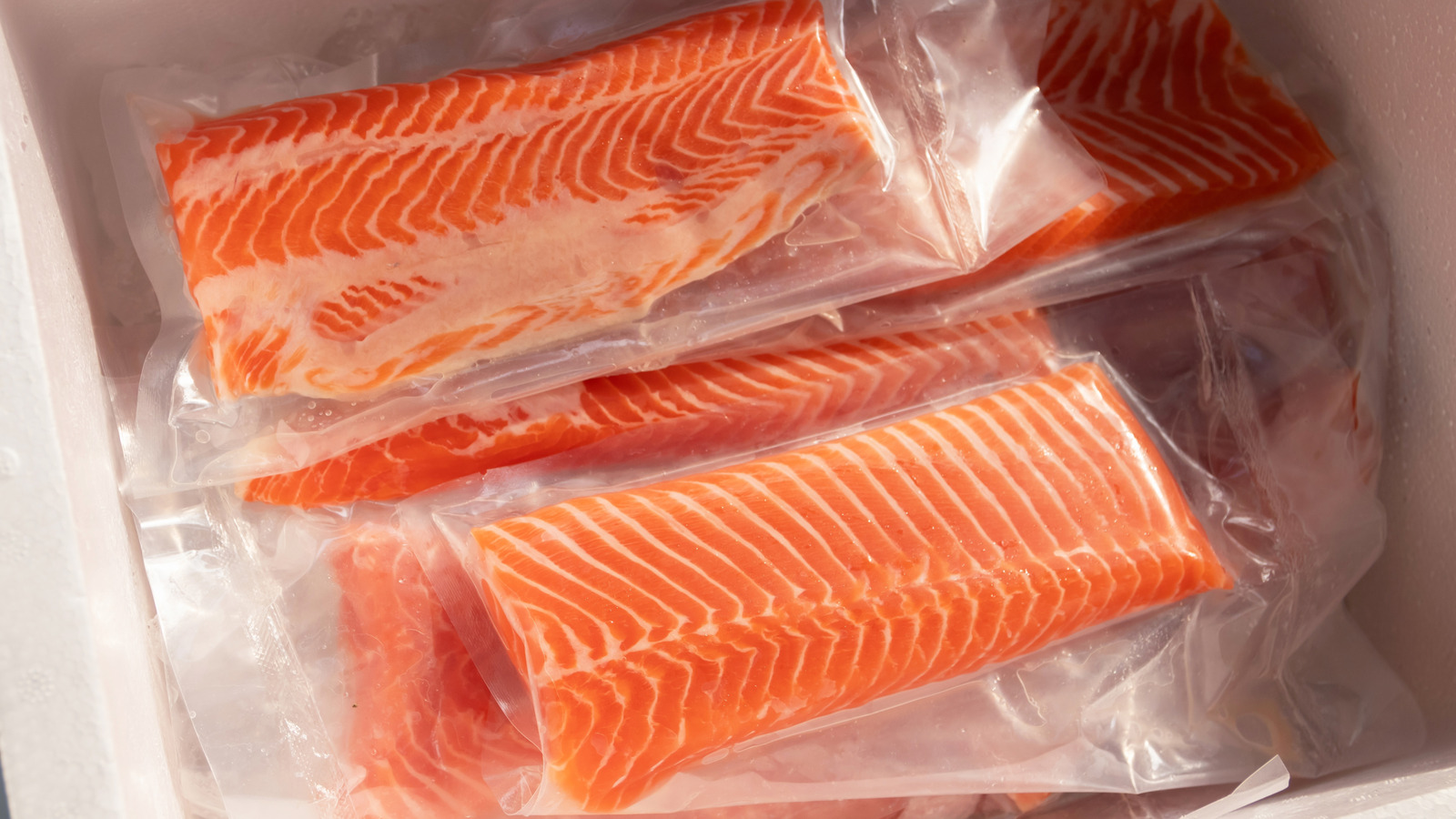Is there any limit to the benefits of vacuum-sealing? Apparently not: The process, which involves a suction device that removes the oxygen from plastic food packaging (which is then sealed), can extend the shelf life of a wide array of meals and leftovers. Among are to preserve amounts of broth or soup that would, in traditional containers, occupy your refrigerator like an invading army; save leftovers from a chilly demise in the freezer; and keep both areas free of the miasma of scents from stored food in various states of cooking and consumption. Vacuum-sealing — or reduced oxygen packaging (ROP), if you want to get technical — is, for many home cooks, among their .
But is there a downside to vacuum-sealing? Discounting the baffling TikTok trend of sucking the air out of a Ziploc bag as a sort of DIY vacuum seal ( unless you're fond of food-borne bacteria), there is one very serious danger to vacuum-sealing, and it's in regard to fish. Specifically, ROP fish pose the risk of exposure to potentially life-threatening bacteria if stored or thawed incorrectly. Having possibly scared you silly with that information, let's look at the right and wrong way to thaw frozen, vacuum-sealed fish.

How to store and thaw vacuum-sealed fish safely The two main bacterial villains involved here are Clostridium botulinum and Listeria monocytogenes. Botulinum can produce a neurotoxin that leads to botulism, a disease which causes breathing and swallowing problems, muscle paralysis, and even death. Listeria monoctyogenes also produce a serious illness that is dangerous for pregnant women, infants, and individuals with weakened immune systems.
Cold temperatures typically halt bacteria growth, but botulinum is an anaerobic bacterium, which means it can survive in low- or even no-oxygen environments — like vacuum-sealed packages. Additionally, fish can carry strains that can thrive and multiply in cold temperatures. So to keep your vacuum-sealed filet of sole from transforming into a bioweapon, the FDA recommends that you store your vacuum-sealed fish in the freezer at temperatures below zero degrees Fahrenheit or in the fridge if set to 38 degrees Fahrenheit or lower.
When it comes time to thaw your vacuum-sealed fish, you have two choices: Thaw the package in your fridge overnight, but make sure that temperatures don't rise above that 38 degree mark. If you need that fish thawed sooner, first remove it from the vacuum-sealed package, place it in a plastic bag, and thaw in cold water. However, remember that these two bacteria can grow in temperatures above 41 degrees Fahrenheit, so regularly check the water temperature and remove the fish as soon as it's thawed.
Recommended.
Food

The Potentially Deadly Reason To Avoid Thawing Fish In Its Vacuum-Sealed Package

Vacuum-sealed fish pose the risk of exposure to potentially life-threatening bacteria if stored or thawed incorrectly. Here's how to do it safely.















